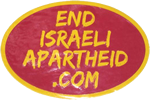

|
The City of Jaffa Index | Ethnic Cleansing Of Palestine | Canada Park | Violations of International Law  Old City of Jaffa before 1948 Badil. 2 Over the course of its 1000 year history, the Old City of Jaffa has been occupied over 30 times, dating back to ancient Canaanites, up through the Ottomans and British. It was a port situated on a hill, surrounded by rich agriculture land. “By the end of the nineteenth century, the thriving city of 50,000 was the cultural and commercial center of Palestine, exporting millions of famed Jaffa oranges and importing foreign laborers from all over the Arab world to work the orchards, vineyards, sugar cane and tobacco fields. In 1909, Tel Aviv was established with 60 Jewish families. By 1948, Tel Aviv, with a population of 200,000, was the biggest city in the British Mandate of Palestine." 1 “Zionist forces initiated a cruel siege on the city of Jaffa in March, 1948. The youth of the city formed popular resistance committees to confront the assault.” On 14 May, 1948 Jaffa fell; that same evening the leaders of the Zionist movement in Palestine declared the establishment of the state of Israel. 2 “Approximately 4,000 of the 120,000 Palestinians managed to remain in their city after it was militarily occupied. They were all rounded up and ghettoized in the Al-Ajami neighborhood which was sealed off from the rest of the city and administered essentially as military prison for two years. “ 2  The Manshiah Quarter in Jaffa, home to Palestinians, after it was destroyed by Ingun Jewish forces, AP Photo, May, 1948 The Al-Ajami neighborhood of Jaffa “was completely surrounded by barbed wire fencing that was patrolled by Israeli soldiers and guard dogs. It was not long before the new Jewish residents of Jaffa, based on their experience under Nazism in Europe, began to refer to the Palestinian neighborhood as the "ghetto." 2 “The Palestinians who remained in Jaffa had lost everything overnight: their city, their friends, their families, their property and their entire physical and social environment. Most had lost their homes as the Israeli military forced them into Al-Ajami.” The military commander had all the power: without his permission, one could not enter or leave the ghetto, and rights to many things like education and work were denied to Palestinians. 2 Israeli officials took the forcibly abandoned properties, declared the owners “present absentees,” and gave the homes complete with furniture to new Jewish immigrants. Most of the Arabs still in Israel remained under military control until 1966, living in constant fear of the Shin Bet, the Israeli internal security service.” 1 “For Jaffa, the Judaizing of the city meant changing the names of the streets as well as purging the history; Israeli textbooks do not mention the legacy and losses of the indigenous Arab population. Avenues that were once named after rich Palestinian families were changed to biblical miracles or Zionist leaders who “liberated” or “ethnically cleansed” Jaffa." 1 “After the ghettoization in 1948, the area also fell victim to urban renewal in the 1950's and 1960's, with destruction of whole neighborhoods and neglect and lack of services in the Arab areas. In the ensuing decades, this also became a “frozen zone” in terms of building permits for the local population.... As the neighborhoods were neglected, Jews moved to nicer areas and the Palestinians stayed.” 1  Palestiain civilians fleeing Jaffa ,1948, Badil. 2 The Tel Aviv municipality destroyed more than 3,000 apartments. “All people began to throw all their garbage on our beach, now it is called the garbage mountain.” Signs warned children not to swim in the waters off of the garbage area. Adjacent to the garbage dump was an old neglected cemetery; because the Tel Aviv municipality did not rebuild a wall, the sea gradually eroded the soil and graves began falling into the sea. “So for kids, it was much more traumatic to swim with bones than garbage.” 1 “The more than 20,000 Palestinians living in Jaffa today continue to experience an ongoing Nakba... The most pressing issue facing Palestinians in Jaffa today is the issue of housing and eviction. Every Palestinian in Jaffa is either directly facing eviction by the municipal authorities, or has a neighbor or relative who faces such eviction, an estimated total of more than 500 families are in this situation. “ The two main excuses for eviction are lack of licensing -- especially since licenses are almost impossible for Palestinians to obtain -- or that the family is considered illegal squatters in their own home which is registered as state property.” 2 The “ old Jaffa synagogue, Or Yisrael, Light of Israel, has been empty for decades and is now under renovation. The NGOs are bringing rightwing Jewish settlers from Gaza and the West Bank into “mixed cities” to “Judaize the area.” In the midst of this secular neighborhood, a group of Jewish settlers, have already increased tensions. Two weeks ago, Sami recounts, they yelled “Death to the Arabs” to a group of teenagers who responded violently, were arrested, and “disappeared” in the hands of the police for two days.” 1 “They are small in number. In one to two years, they will be much stronger, and if an Arab opens his mouth it will be very dangerous.” 1 Many Palestinian men, dispossessed, humiliated, and depressed, turned to alcohol, opium, and criminal activities. Thus the grandparent's generation lost its family, its property and its pride as Palestinians, the Arab neighborhoods became increasingly marginal, and the population was blamed for its own downfall. In 1950, Jaffa became part of the Tel Aviv-Jafo municipality. Tel Aviv has never built an Arab neighborhood, school, or mosque. 1 Sources 1. Article by Alice Rothchild who interviewed Sami abu Shehadeh http://www.labourfriendsofpalestine.co.uk/articles_13.html 2. Article by Sami Abu Shehadeh & Fadi Shbaytah http://www.palestineremembered.com/Jaffa/Jaffa/Story12399.html |
 See Our Posters  Choose one FREE Sticker   
|
